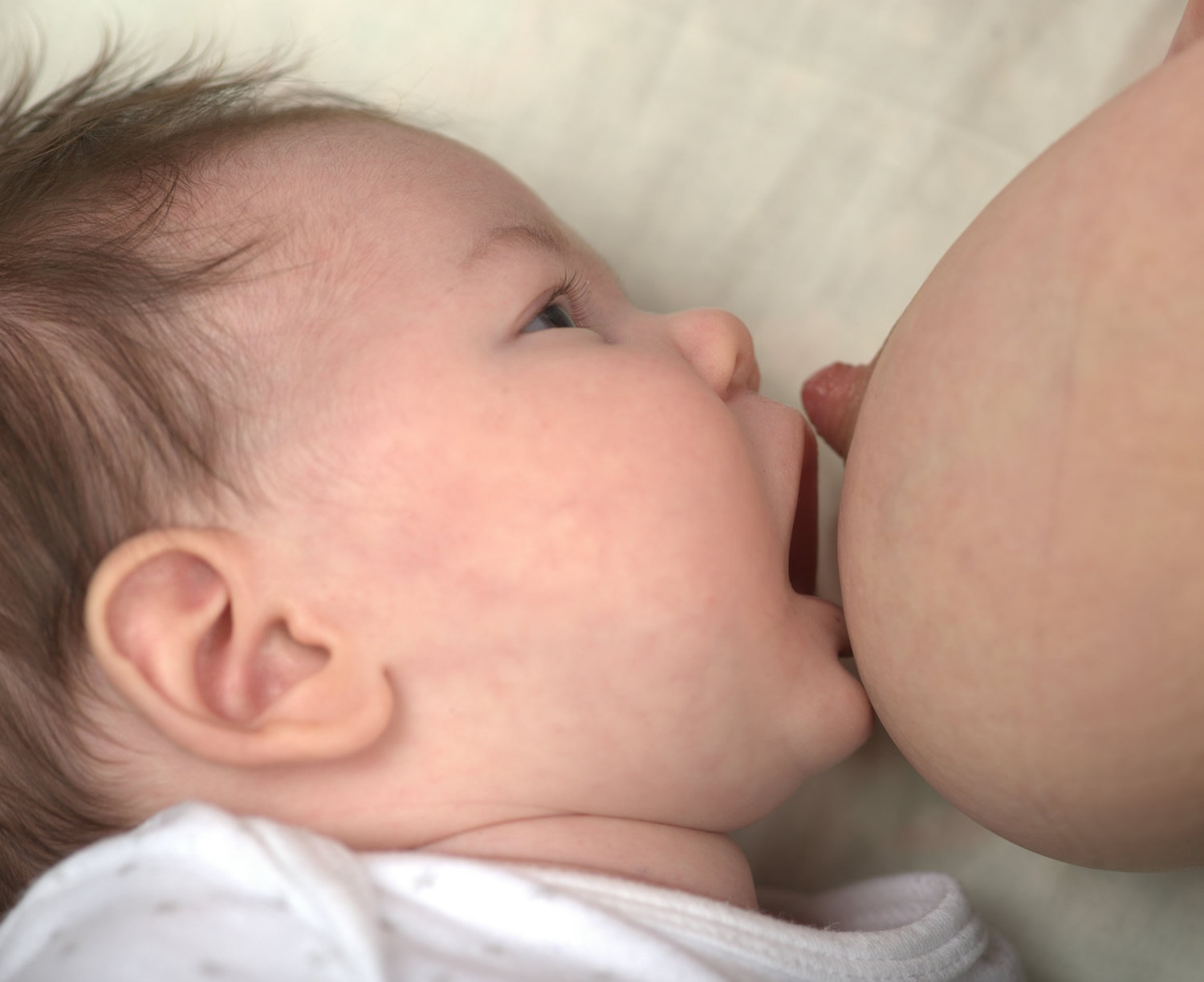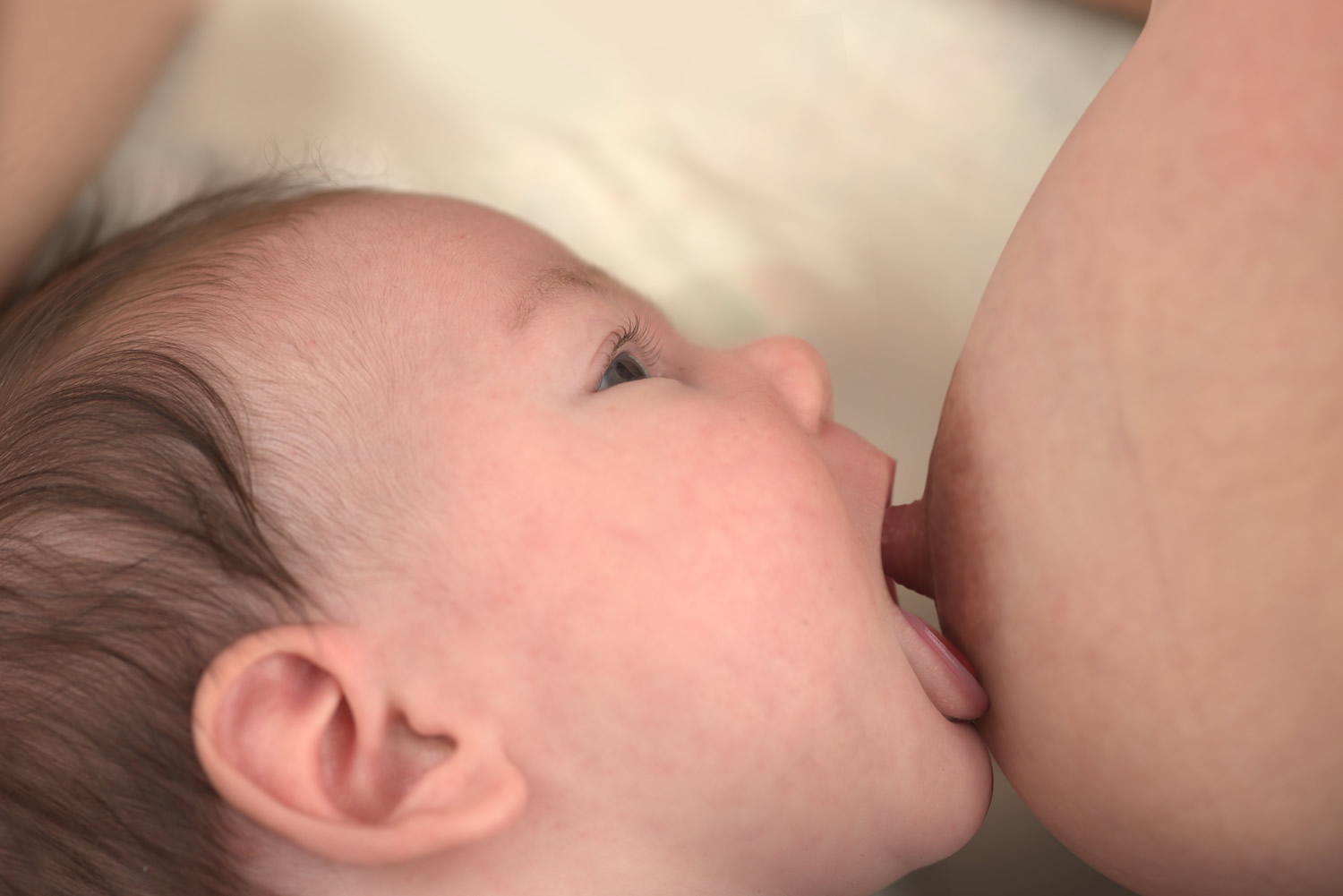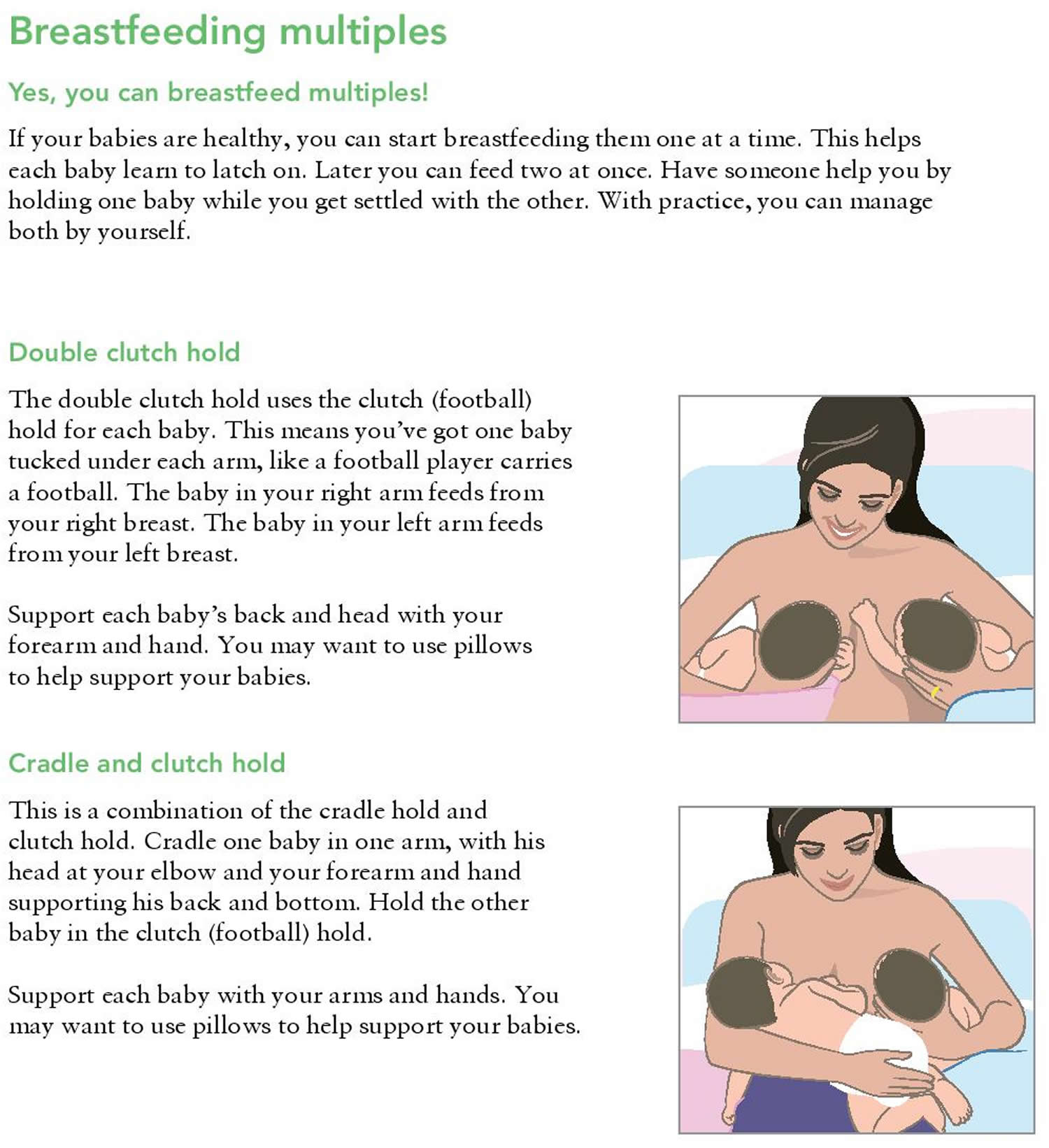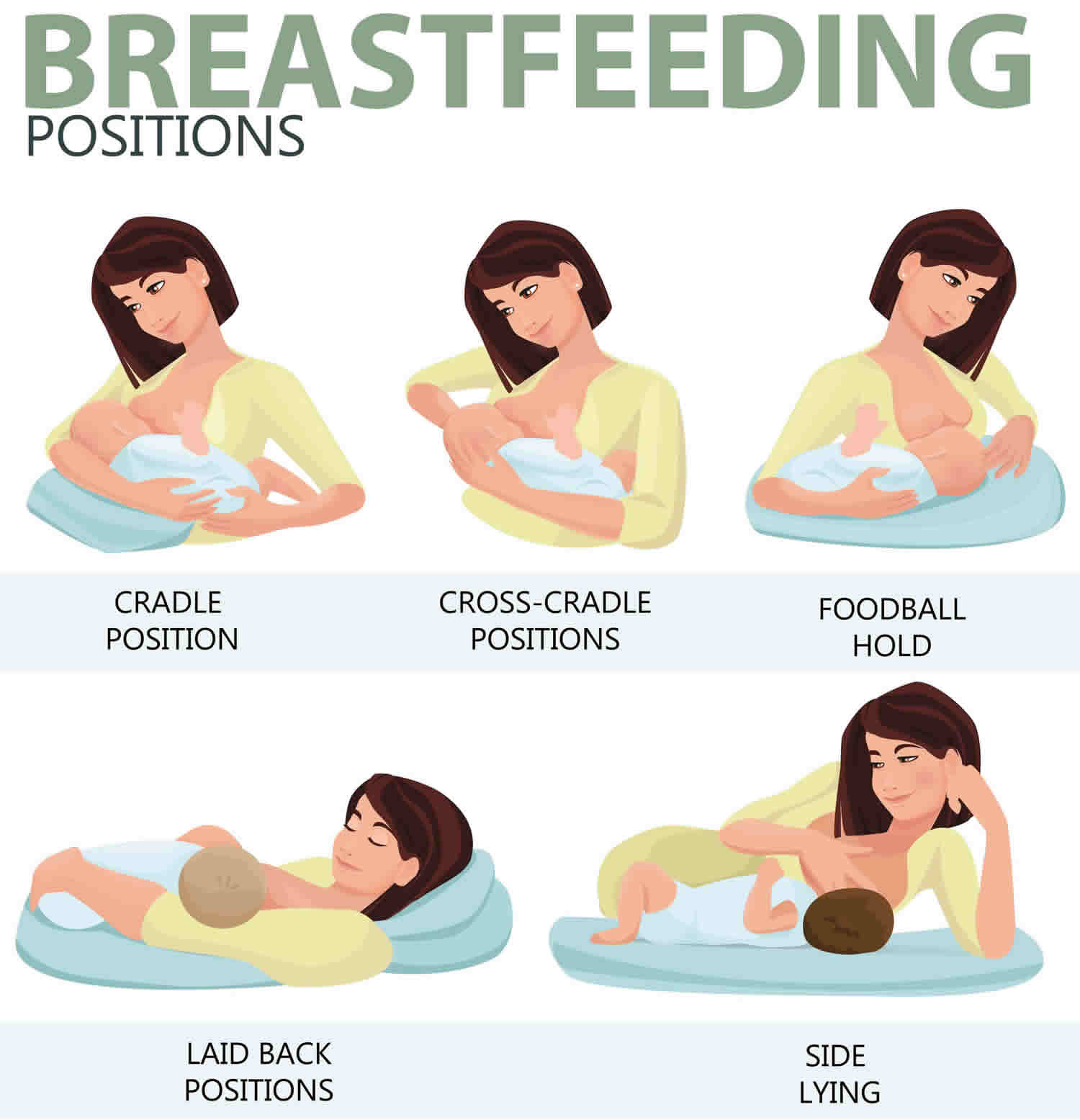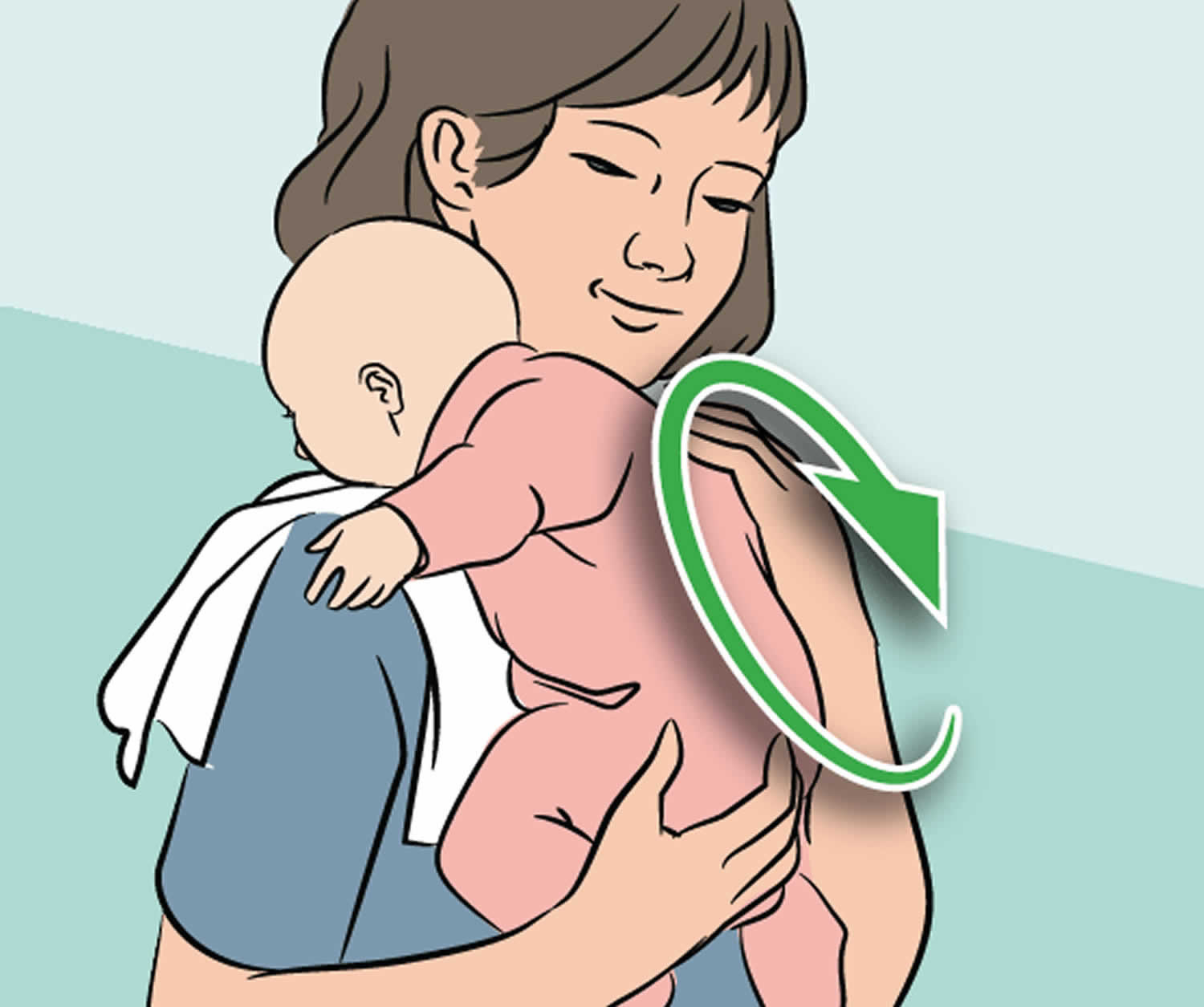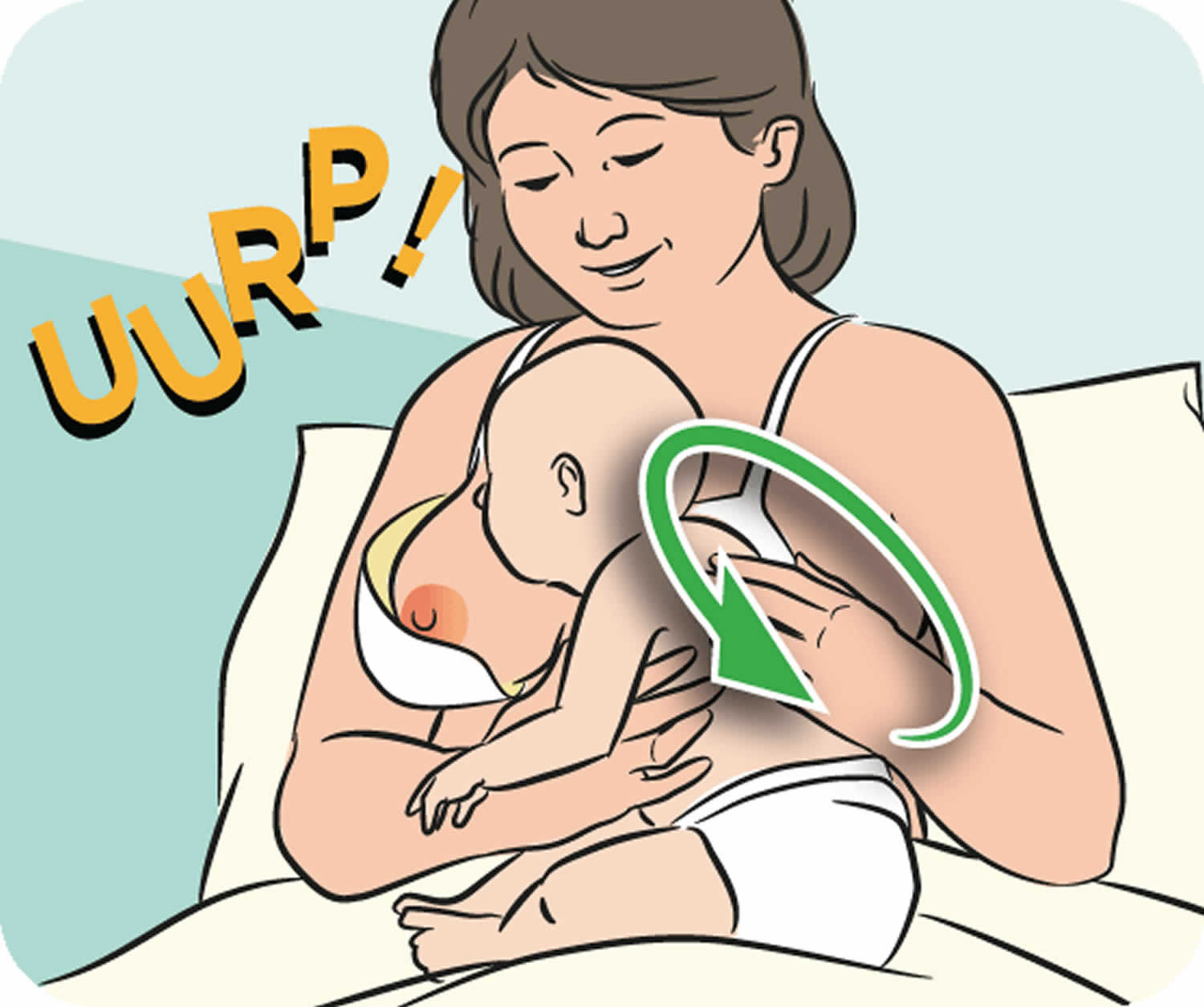Contents
- Latching on breastfeeding tips
- How to breastfeed twins, triplets or more
- What does it mean to have a good latch?
- How can I help my baby get a good latch while learning to breastfeed?
- What are some common breastfeeding latch problems?
- When can I start breastfeeding?
- Is breastfeeding good for babies with special needs?
- Is any amount of breastfeeding good?
- How do you know when your baby’s ready to eat?
- How often do you breastfeed?
- How long does each feeding last?
- How do you know if your baby is getting enough milk?
- Is breastfeeding good for the mother?
- Can breastfeeding help me lose weight?
- Is breastfeeding safe for all moms and babies?
- How long should a mother breastfeed?
- What can happen if someone else’s breast milk is given to another child?
- Should mothers who smoke breastfeed?
- When should a baby start eating solid foods such as cereals, vegetables, and fruits?
- How to stop breastfeeding?
- Does your baby need vitamin supplements if you breastfeed?
- How does breastfeeding help in an emergency?
- Do you need special clothes to breastfeed?
- How to hold baby when breastfeeding
- Burping your baby
- Breastfeeding benefits
Latching on breastfeeding tips
With breastfeeding, a latch refers to how the baby fastens onto the breast. Getting a good latch is important. In fact, how your baby latches is actually more important than how you hold your baby. Getting your baby to “latch on” properly can take some practice. You can try different breastfeeding holds to help your baby get a good latch. Learn signs of a good latch. Get tips to help your baby have a good latch.
Latching on (see the steps below)
- Hold your baby’s whole body close with their nose level with your nipple.
- Let your baby’s head tip back a little so that their top lip can brush against your nipple. This should help your baby to make a wide, open mouth.
- When your baby’s mouth opens wide, their chin should be able to touch your breast first, with their head tipped back so that their tongue can reach as much breast as possible.
- With your baby’s chin firmly touching your breast and their nose clear, their mouth should be wide open. You should see much more of the darker nipple skin above your baby’s top lip than below their bottom lip. Your baby’s cheeks will look full and rounded as they feed.
Signs of a good latch include the following:
- The latch feels comfortable to you and does not hurt or pinch.
- Your baby’s chest rests against your body. Your baby does not have to turn his or her head while drinking.
- You see little or no areola (the darker skin around the nipple), depending on the size of your areola and the size of your baby’s mouth.
- When your baby is positioned well, his or her mouth will be filled with breast.
- The baby’s tongue is cupped under the breast, so you might not see the baby’s tongue.
- You hear or see your baby swallow. Some babies swallow so quietly that a pause in their breathing may be the only sign of swallowing.
- You see the baby’s ears “wiggle” slightly.
- Your baby’s lips turn outward like fish lips, not inward. You may not even be able to see the baby’s bottom lip.
- Your baby’s chin touches your breast.
Step 1. Hold your baby’s whole body close with their nose level with your nipple.
Step 2. Let your baby’s head tip back a little so that their top lip can brush against your nipple. This should help your baby to make a wide, open mouth.
Step 3. When your baby’s mouth opens wide, their chin should be able to touch your breast first, with their head tipped back so that their tongue can reach as much breast as possible.
Step 4. With your baby’s chin firmly touching your breast and their nose clear, their mouth should be wide open. You should see much more of the darker nipple skin above your baby’s top lip than below their bottom lip. Your baby’s cheeks will look full and rounded as they feed.
How to breastfeed twins, triplets or more
What does it mean to have a good latch?
A good latch means that the bottom of your areola (the darker area around the nipple) is in your baby’s mouth and your nipple is back inside his or her mouth, where it’s soft and flexible. A shallow latch happens when your baby does not have enough of your breast in his/her mouth or is too close to the end of your nipple. A shallow latch can make the nipple sore, cracked, and bleeding.
Check your nipples
The sensitivity of the skin on your nipples and breasts helps your breasts respond to your baby and know how much milk to make. When the baby is latched correctly, the bottom part of the areola is also in his or her mouth. But a shallow latch, even if it doesn’t hurt right away, will start to hurt soon. And your baby has to work harder to get the milk out.
Not sure if baby’s latch is too shallow?
Ask yourself:
- Are you in pain? If the pain lasts longer than a few seconds, the latch is probably too shallow. Gently break the suction by placing a clean finger into your baby’s mouth and help your baby latch on again.
- How’s your nipple? When the baby unlatches, look down. Your nipple should look the same or slightly longer than usual. Pain or pinching is a sign of a poor latch.
Check your comfort
Both you and your baby should be comfortable both during and after feedings.
- During feeds. A little bit of discomfort at first is okay, but if your baby has been at the breast more than a few seconds and it still hurts, or if you find yourself using the breathing they taught you for labor and delivery to get through pain, that’s not good. Take your baby off, look at how you’re positioned, and try again. Your baby needs a good latch to get maximum milk, and you need a good latch for comfort.
- Between feeds. You might sometimes feel your breasts getting fuller when it’s time for a feeding. Some moms can feel a tingling sensation in their breasts just by thinking about their baby or hearing another baby cry. You may even leak a little milk between feedings. These are normal signs. But if your breasts feel painful, achy, itchy, hot, or burning, or you feel a hard lump that can’t be massaged out, call a doctor or nurse right away. These can be signs of an infection. Regardless of the diagnosis, even if you’re prescribed medicine, keep breastfeeding if the doctor or nurse tells you to. Why? Continued breastfeeding keeps the milk moving through the breast, which helps the healing process and speeds recovery.
Sometimes, even when you do everything right and the latch looks good, you may still experience pain. Remember, pain is a red flag. So get help from a breastfeeding expert, doctor, or nurse.
How can I help my baby get a good latch while learning to breastfeed?
The steps below can help your newborn latch on to the breast to start sucking when he or she is ready. Letting your baby begin the process of searching for the breast may take some of the pressure off you and keeps the baby calm and relaxed. This approach to learning to breastfeeding is a more relaxed, baby-led latch. Sometimes called biological nurturing, laid-back breastfeeding, or baby-led breastfeeding, this style of breastfeeding allows your baby to lead and follow his or her instincts to suck.
Keep in mind that there is no one way to start breastfeeding. As long as the baby is latched on well, how you get there is up to you.
- Create a calm environment first. Recline on pillows or other comfortable area. Be in a place where you can be relaxed and calm.
- Hold your baby skin-to-skin. Hold your baby, wearing only a diaper, against your bare chest. Hold the baby upright between your breasts and just enjoy your baby for a while with no thoughts of breastfeeding yet.
- Let your baby lead. If your baby is not hungry, she will stay curled up against your chest. If your baby is hungry, she will bob her head against you, try to make eye contact, and squirm around. Learn how to read your baby’s hunger signs.
- Support your baby, but don’t force the latch. Support her head and shoulders as she searches for your breast. Avoid the temptation to help her latch on.
- Allow your breast to hang naturally. When your baby’s chin hits your breast, the firm pressure makes her open her mouth wide and reach up and over the nipple. As she presses her chin into the breast and opens her mouth, she should get a deep latch. Keep in mind that your baby can breathe at the breast. The nostrils flare to allow air in.
If you have tried the “baby-led” approach and your baby is still having problems latching on, try these tips:
- Tickle the baby’s lips with your nipple to encourage him or her to open wide.
- Pull your baby close so that the baby’s chin and lower jaw moves in to your breast.
- Watch the baby’s lower lip and aim it as far from the base of the nipple as possible so that the baby takes a large mouthful of breast.
What are some common breastfeeding latch problems?
Below are some common latch problems and how to deal with them.
- You’re in pain. Many moms say their breasts feel tender when they first start breastfeeding. A mother and her baby need time to find comfortable breastfeeding positions and a good latch. If breastfeeding hurts, your baby may be sucking on only the nipple, and not also on the areola (the darker skin around the nipple). Gently break your baby’s suction to your breast by placing a clean finger in the corner of your baby’s mouth. Then try again to get your baby to latch on. To find out if your baby is sucking only on your nipple, check what your nipple looks like when it comes out of your baby’s mouth. Your nipple should not look flat or compressed. It should look round and long or the same shape as it was before the feeding.
- You or your baby feels frustrated. Take a short break and hold your baby in an upright position. Try holding your baby between your breasts with your skin touching his or her skin (called skin-to-skin). Talk or sing to your baby, or give your baby one of your fingers to suck on for comfort. Try to breastfeed again in a little while.
- Your baby has a weak suck or makes tiny sucking movements. Your baby may not have a deep enough latch to suck the milk from your breast. Gently break your baby’s suction to your breast by placing a clean finger in the corner of your baby’s mouth. Then try to get your baby to latch on again. Talk with a lactation consultant or pediatrician if you are not sure if your baby is getting enough milk. But don’t worry. A weak suck is rarely caused by a health problem.
- Your baby may be tongue-tied (ankyloglossia). Babies with a tight or short lingual frenulum (the piece of tissue attaching the tongue to the floor of the mouth) are described as “tongue-tied.” These babies often find it hard to nurse. They may be unable to extend their tongue past their lower gum line or properly cup the breast during a feed. This can cause slow weight gain in the baby and nipple pain in the mother. If you think your baby may be tongue-tied, talk to your doctor.
When can I start breastfeeding?
Most women can start breastfeeding within 1 hour after their baby is born. A nurse or lactation consultant can help you get started:
- Tell the nurses that you want to breastfeed.
- Ask to have your baby stay in the room with you so you can breastfeed him when he needs to eat.
- Ask your nurses, the lactation consultant and your baby’s provider to help make sure breastfeeding is going well before you leave the hospital.
Is breastfeeding good for babies with special needs?
Yes. Some babies are born premature (before 37 weeks of pregnancy) or with birth defects or other medical conditions. Breastfeeding a baby with special needs like these can help her grow and protect her from illness. But you may need help to make breastfeeding work for you and your baby.
Talk to your health care provider or lactation consultant about breastfeeding your baby with special needs. A lactation consultant is a person with special training in helping women breastfeed.
Is any amount of breastfeeding good?
Yes. It’s best to feed your baby only breast milk for at least 6 months. This means no water, formula, other liquids or solid food—just breast milk. But any amount of breastfeeding is good for your baby’s health and development. Even breastfeeding for a short time is good for your baby.
How do you know when your baby’s ready to eat?
Look for her feeding cues. Feeding cues are ways that your baby tells you that she’s hungry. Examples are:
- Rooting (turning her head toward anything that strokes her cheek or mouth)
- Sucking movements or sounds
- Putting her hand to her mouth
- Crying — This is a late feeding cue. Try to breastfeed your baby before she starts to cry.
How often do you breastfeed?
Feed your baby when she’s hungry. This is called on-demand feeding. Most newborns eat about eight to 12 times over 24 hours, which is about once every 2 to 3 hours. But each baby is different. Your baby may want to feed more often or less often. As your baby grows, her feeding patterns may change, and she may go longer between feedings.
To make nighttime feedings easier, put the baby’s crib in your room. Just don’t sleep with the baby in your bed.
How long does each feeding last?
Let your baby feed as long as she wants at one breast. This is called feeding unlimited at the breast. This usually takes about 15 to 30 minutes. Your baby may take more or less time. When she is finished with one breast, burp her. Then switch her to feed from the other breast. It’s OK if she only wants to nurse from one breast. Just be sure to start her on the other breast at the next feeding. Let your baby end breastfeeding on her own.
How do you know if your baby is getting enough milk?
Lots of new moms ask this question. Your body is pretty amazing. As you breastfeed, your body learns when your baby needs more milk. Your body makes exactly the right amount for your baby. But what if you’re still not sure he’s eating enough? Your baby is probably getting enough milk if he:
- Is gaining weight
- Is making six to eight wet diapers a day by the time he’s 5 to 7 days old
Is breastfeeding good for the mother?
Yes. Breastfeeding your baby helps you because:
- It increases the amount of a hormone in your body called oxytocin. This helps your uterus (womb) go back to the size it was before you got pregnant. It also helps stop bleeding that you have after giving birth.
- It burns extra calories. This helps you get back to your pre-pregnancy weight (your weight before pregnancy).
- It may help lower your risk for diabetes, breast cancer and ovarian cancer.
- It can help you bond with your baby.
Breastfeeding also delays the return of your period. But this can make it hard to know when your body can get pregnant again. Use birth control when you start having sex again. Talk to your provider about birth control that’s safe to use when you’re breastfeeding.
Can breastfeeding help me lose weight?
Besides giving your baby nourishment and helping to keep your baby from becoming sick, breastfeeding may help you lose weight. Many women who breastfed their babies said it helped them get back to their pre-pregnancy weight more quickly, but experts are still looking at the effects of breastfeeding on weight loss.
Is breastfeeding safe for all moms and babies?
No. Breastfeeding may not be safe for your baby if you have certain medical conditions, take certain medicines or have other problems, like using street drugs or abusing prescription drugs. You can pass some infections, medicines and drugs to your baby through breast milk. Some can be very harmful to your baby. Talk to your provider if you think you have a condition that may make breastfeeding unsafe for your baby.
How long should a mother breastfeed?
The American Academy of Pediatrics recommends that breastfeeding continue for at least 12 months, and thereafter for as long as mother and baby desire. The World Health Organization recommends continued breastfeeding up to 2 years of age or beyond.
What can happen if someone else’s breast milk is given to another child?
HIV and other serious infectious diseases can be transmitted through breast milk. However, the risk of infection from a single bottle of breast milk, even if the mother is HIV positive, is extremely small. For women who do not have HIV or other serious infectious diseases, there is little risk to the child who receives her breast milk.
Should mothers who smoke breastfeed?
Mothers who smoke are encouraged to quit, however, breast milk remains the ideal food for a baby even if the mother smokes. Although nicotine may be present in breast milk, adverse effects on the infant during breastfeeding have not been reported. American Academy of Pediatrics recognizes pregnancy and lactation as two ideal times to promote smoking cessation, but does not indicate that mothers who smoke should not breastfeed.
When should a baby start eating solid foods such as cereals, vegetables, and fruits?
Breast milk alone is sufficient to support optimal growth and development for approximately the first 6 months after birth. For these very young infants, the American Academy of Pediatrics 1) states that water, juice, and other foods are generally unnecessary. Even when babies enjoy discovering new tastes and textures, solid foods should not replace breastfeeding, but merely complement breast milk as the infant’s main source of nutrients throughout the first year. Beyond one year, as the variety and volume of solid foods gradually increase, breast milk remains an ideal addition to the child’s diet.
How to stop breastfeeding?
You can breastfeed your baby for as long as you want. When you stop breastfeeding, it’s called weaning your baby. Some babies begin weaning on their own between 6 and 12 months as they start eating solid food and become more active. Weaning is a slow process that doesn’t happen in a few days. Taking your time can make weaning easier for you and your baby.
If you wean your baby off breast milk before she’s 12 months old, feed her formula. She can stay on formula until she’s ready to drink regular milk after she turns 1.
Does your baby need vitamin supplements if you breastfeed?
Yes. A supplement is a product you take to make up for certain nutrients that you don’t get enough of in the foods you eat.
Breast milk doesn’t have enough vitamin D for your baby. Vitamin D helps make bones and teeth strong and helps prevent a bone disease called rickets. Give your baby vitamin D drops starting in the first few days of life. Talk to your baby’s provider about vitamin D drops for your baby.
If you’re a vegan or if you’ve had gastric bypass surgery, you need extra vitamin B12. A vegan is someone who doesn’t eat meat or anything made with animal products, like eggs or milk. Gastric bypass is surgery on the stomach and intestines to help a person lose weight. Ask your provider about taking a vitamin B12 supplement to make sure you and your baby get the right amount.
How does breastfeeding help in an emergency?
During an emergency, such as a natural disaster, breastfeeding can save your baby’s life:
- Breastfeeding protects your baby from the risks of an unclean water supply.
- Breastfeeding can help protect your baby against respiratory illnesses and diarrhea.
- Your breast milk is always at the right temperature for your baby. It helps to keep your baby’s body temperature from dropping too low.
- Your breast milk is always available without needing other supplies.
Do you need special clothes to breastfeed?
No, but nursing bras have flaps that make breastfeeding easier than if you’re wearing your regular bra. You may want to get one or two while you’re pregnant so you have them when your baby is born. Get a nursing bra that is one size larger than your regular bra size so it will fit when your breasts get larger when your breast milk comes in.
You may find it easier to breastfeed in shirts that pull up, rather than shirts that button. Sometimes it’s hard to get buttons undone quickly when you’ve got a hungry baby wanting to eat.
How to hold baby when breastfeeding
Before you breastfeed your baby, have a drink beside you – something thirst quenching like a big glass of water. There are a few different breastfeeding positions you can try, some moms find that the following positions are helpful ways to get comfortable and support their babies while breastfeeding. You can also use pillows under your arms, elbows, neck, or back to give you added comfort and support. Keep trying different positions until you are comfortable. What works for one feeding may not work for the next feeding.
- Clutch or “football” hold: useful if you had a C-section, or if you have large breasts, flat or inverted nipples, or a strong let-down reflex. This hold is also helpful for babies who like to be in a more upright position when they feed. Hold your baby at your side with the baby lying on his or her back and with his or her head at the level of your nipple. Support your baby’s head by placing the palm of your hand at the base of his or her head.
- Cross-cradle or transitional hold: useful for premature babies or babies with a weak suck because this hold gives extra head support and may help the baby stay latched. Hold your baby along the area opposite from the breast you are using. Support your baby’s head at the base of his or her neck with the palm of your hand.
- Cradle hold: an easy, common hold that is comfortable for most mothers and babies. Hold your baby with his or her head on your forearm and his or her body facing yours.
- Laid-back hold (straddle hold): a more relaxed, baby-led approach. Lie back on a pillow. Lay your baby against your body with your baby’s head just above and between your breasts. Gravity and an instinct to nurse will guide your baby to your breast. As your baby searches for your breast, support your baby’s head and shoulders but don’t force the latch.
- Side-lying position: useful if you had a C-section, but also allows you to rest while the baby breastfeeds. Lie on your side with your baby facing you. Pull your baby close so your baby faces your body.
The following are 3 of the most popular breastfeeding positions:
- Cradle hold
- Lying on your side
- Clutch or “football” hold
Figure 1. Breastfeeding positions
Cradle hold
This is the probably the most popular breastfeeding position. However, if you’ve had a caesarean, this may be uncomfortable as your baby lies across your tummy near the scar (try lying on your side or the rugby hold instead). For the cradle hold, sit in a comfy chair with arm rests, or a bed with cushions or pillows around you.
Positioning:
- Lie your baby across your lap, facing you.
- Place your baby’s head on your forearm – nose towards your nipple. Your hand should support the length of their body.
- Place your baby’s lower arm under yours.
- Check to make sure your baby’s ear, shoulder and hip are in a straight line.
If you’re sitting on a chair, rest your feet on a stool or small table – this will stop you from leaning forward which can make your back ache.
Figure 2. Cradle hold
Lying on your side
This is a good position if you’ve had a caesarean or difficult delivery, or if you’re breastfeeding in the middle of the night.
Positioning:
- Start by getting comfy lying on your side. Your baby lies facing you, so you are tummy to tummy. Check to make sure your baby’s ear, shoulder and hip are in a straight line – not twisted.
- Put some cushions or pillows behind you for support. A rolled up baby blanket placed behind your baby will help support them. If you’ve got a pillow under your head, make sure it’s not too close to your baby’s head or face.
- Tuck the arm you’re lying on under your head or pillow (ensuring your baby’s position isn’t altered by the pillow) and use your free arm to support and guide your baby’s head to your breast.
Figure 3. Lying on your side
Football hold (Clutch)
The football hold is a good position for twins as you can feed them at the same time, as well as caesarean babies as there’s no pressure on the tummy and scar area.
Positioning
- Sit in a chair with a cushion or pillow along your side.
- Position your baby at your side (the side you want to feed from), under your arm, with their hips close to your hips.
- Your baby’s nose should be level with your nipple.
- Support your baby’s neck with the palm of your hand.
- Gently guide your baby to your nipple.
Figure 4. Football hold
Checking your position
Both you and your baby need to be comfortable. Although it takes practice to get a good latch, you should never have to work hard to stay in the right position while your baby is breastfeeding. You can only know which nursing hold works best for you and your baby through trial and error. But whatever the position, you should be relaxed with your baby snuggled close, belly-to-belly with you, so your baby doesn’t have to turn his or her head to the side.
Not sure if your baby is positioned right?
Here are two easy tricks:
- Look for your baby’s belly button. If you can see the belly button while your baby’s latched, the baby’s not comfortable enough to latch well. Scoot your baby’s body inward a little so that the belly button is facing toward you.
- Look around. If you can chat and use your hands without concentrating on holding your position, that’s a good position for a latch.
Burping your baby
Burping your baby also known as winding, is an important part of feeding. Newborns might have wind if they swallow air when crying or feeding. When your baby swallows, air bubbles can become trapped in their tummy and cause a lot of discomfort. Some babies find it easy to burp, while others need a helping hand. Some babies might be unsettled during and after a feed until they’ve been burped. Burping your baby part way through a feed might help. Use the position that works best for your baby.
There are no rules on when you should burp your baby, some babies need burping during their feed, some after. Look for clues – if your baby seems uncomfortable while feeding, have a little burping break. If they seem fine while feeding, wait until they’ve finished. Your baby will let you know.
To burp a baby support your baby’s head and neck, make sure their tummy and back is nice and straight (not curled up), and repeated gentle patting on your baby’s back should do the trick. Cup your hand while patting — this is gentler on the baby than a flat palm. To prevent messy cleanups when your baby spits up or has a “wet burp,” you might want to place a towel or bib under your baby’s chin or on your shoulder.
You don’t need to spend ages burping your baby, a couple of minutes should be enough.
There are a few ways to burp your baby. Try them all out and see which works best or use a combination.
Try different positions for burping that are comfortable for you and your baby. Many parents use one of these three methods:
- Sit upright and hold your baby against your chest. Your baby’s chin should rest on your shoulder as you support the baby with one hand. With the other hand, gently pat your baby’s back. Sitting in a rocking chair and gently rocking with your baby while you do this may also help.
- Hold your baby sitting up, in your lap or across your knee. Support your baby’s chest and head with one hand by cradling your baby’s chin in the palm of your hand. Rest the heel of your hand on your baby’s chest, but be careful to grip your baby’s chin, not the throat. Use the other hand to pat your baby’s back.
- Lay your baby on your lap on his or her belly. Support your baby’s head and make sure it’s higher than his or her chest. Gently pat your baby’s back.
If your baby seems fussy while feeding, stop the session, burp your baby, and then begin feeding again. Try burping your baby every 2 to 3 ounces (60 to 90 milliliters) if you bottle-feed and each time you switch breasts if you breastfeed.
Try burping your baby every ounce during bottle-feeding or every 5 minutes during breastfeeding if your baby:
- tends to be gassy
- spits a lot
- has gastroesophageal reflux disease (GERD)
- seems fussy during feeding
If your baby doesn’t burp after a few minutes, change the baby’s position and try burping for another few minutes before feeding again. Always burp your baby when feeding time is over.
To help prevent the milk from coming back up, keep your baby upright after feeding for 10 to 15 minutes, or longer if your baby spits up or has GERD. But don’t worry if your baby spits sometimes. It’s probably more unpleasant for you than it is for your baby.
Sometimes your baby may awaken because of gas. Picking your little one up to burp might put him or her back to sleep. As your baby gets older, don’t worry if your child doesn’t burp during or after every feeding. Usually, it means that your baby has learned to eat without swallowing excess air.
Babies with colic (3 or more hours a day of continued crying) might have gas from swallowing too much air during crying spells, which can make the baby even more uncomfortable. Using anti-gas drops has not proven to be an effective way to treat colic or gas, and some of these medicines can be dangerous.
If your newborn is often unsettled after feeding and burping, or you’re worried for any other reason, see your doctor.
How long to burp a baby?
You don’t need to spend ages burping your baby, a couple of minutes should be enough.
Over your shoulder
Put a cloth over your shoulder. Put baby over your shoulder and support baby with your hand on the same side. With your baby’s chin resting on your shoulder, support the head and shoulder area with one hand, and gently rub and pat your baby’s back. It might help to walk around as you are doing this.
Your baby might vomit up some milk during burping. This is normal.
After burping, your baby will give you baby cues about what to do next. If baby is comfortable, it might be time for play and activities with you.
If your baby is still upset after being burped, the problem might be something other than wind. Is your baby still hungry? Does baby have a dirty nappy? Is baby unwell?
Figure 5. Over your shoulder to burp a baby
Sitting on your lap
Sit your baby upright on your lap facing away from you. Place the palm of your hand flat against their chest and support their chin and jaw (don’t put any pressure on the throat area). Lean your baby forwards slightly with baby’s tummy against your hand and with your free hand, gently rub or pat your baby’s back. The pressure of your hand on baby’s tummy might bring up wind.
Your baby may bring some milk up while burping, so have a burp cloth or muslin square ready (this is perfectly normal and nothing to worry about).
After burping, your baby will give you baby cues about what to do next. If baby is comfortable, it might be time for play and activities with you.
If your baby is still upset after being burped, the problem might be something other than wind. Is your baby still hungry? Does baby have a dirty nappy? Is baby unwell?
Figure 6. Sitting on your lap to burp a baby
Lying across your lap
Lie your baby across your lap or your forearm face down so baby is looking sideways and is supported by your knee or hand. Supporting their chin (don’t put any pressure on the throat area), use your free hand to gently rub or pat your baby’s back with your other hand.
Your baby may bring some milk up while burping, so have a burp cloth or muslin square ready (this is perfectly normal and nothing to worry about).
After burping, your baby will give you baby cues about what to do next. If baby is comfortable, it might be time for play and activities with you.
If your baby is still upset after being burped, the problem might be something other than wind. Is your baby still hungry? Does baby have a dirty nappy? Is baby unwell?
Figure 7. Lying across your lap to burp a baby
What if my baby won’t burp?
If these methods don’t work and your baby shows signs of trapped wind (crying, arched back, drawing legs into tummy, clenched fists), try lying them on their back and gently massaging their tummy. Also move your baby’s legs back and forth – like they’re riding a bicycle. If this doesn’t work, talk to your health care provider, they’ll be able to advise you on the best thing to do.
Breastfeeding benefits
Why breastfeeding is good for your baby
- Breast milk has hormones and the right amount of protein, sugar, fat and most vitamins to help your baby grow and develop. Breast milk has antibodies that help protect your baby from many illnesses. Antibodies are cells in the body that fight off infection. Breastfed babies have fewer health problems than babies who aren’t breastfed. Breastfed babies don’t have as many ear, lung or urinary tract infections. And they’re less likely to have asthma, certain cancers and diabetes (having too much sugar in your blood) later in life. They’re also less likely to be overweight.
- Breast milk has fatty acids, like DHA (docosahexaenoic acid), that may help your baby’s brain and eyes develop. It may lower the chances of sudden infant death syndrome (SIDS). SIDS is the unexplained death of a baby younger than 1 year old.
- Breast milk is easy to digest. A breastfed baby may have less gas and belly pain than a baby who is fed formula. Formula is a man-made product that you buy and feed your baby.
- Breast milk changes as your baby grows so he gets exactly what he needs at the right time. For example, for the first few days after giving birth, your breasts make a thick, yellowish form of breast milk called colostrum. Colostrum has nutrients and antibodies that your baby needs in the first few days of life. It changes to breast milk in 3 to 4 days. Breast milk is always ready when your baby wants to eat. The more you breastfeed, the more milk you make. Most breastfeeding moms make as much breast milk as their babies need.
In the United States, most new moms (about 4 in 5 or 80 percent) breastfeed their babies. About half of these moms breastfeed their babies for at least 6 months.
Breastfeeding benefits for infants
Infants who are breastfed have reduced risks of 2):
- Asthma
- Obesity (during childhood)
- Type 2 diabetes
- Ear and respiratory infections
- Sudden infant death syndrome (SIDS)
- Leukemia (during childhood)
- Ear infections
- Eczema (atopic dermatitis)
- Diarrhea and vomiting
- Lower respiratory infections
- Necrotizing enterocolitis, a disease that affects the gastrointestinal tract in premature babies, or babies born before 37 weeks of pregnancy
Your breastmilk helps your baby grow healthy and strong from day one.
Your first milk is liquid gold. Called liquid gold for its deep yellow color, colostrum is the thick first milk that you make during pregnancy and just after birth. This milk is very rich in nutrients and includes antibodies to protect your baby from infections.
- Colostrum also helps your newborn’s digestive system to grow and function. Your baby gets only a small amount of colostrum at each feeding, because the stomach of a newborn infant is tiny and can hold only a small amount. (Read How do I know if my baby is getting enough breastmilk? to see just how small your newborn’s tummy is!)
- Your milk changes as your baby grows. Colostrum changes into mature milk by the third to fifth day after birth. This mature milk has just the right amount of fat, sugar, water, and protein to help your baby continue to grow. It looks thinner than colostrum, but it has the nutrients and antibodies your baby needs for healthy growth.
Breastfeeding benefits for mothers
Breastfeeding helps a mother’s health and healing following childbirth. Breastfeeding leads to a lower risk of these health problems in mothers 3):
- Heart disease
- Type 2 diabetes
- Ovarian cancer
- Breast cancer
According to a report by the Centers for Disease Control and Prevention 4), the proportion of mothers who breastfed their infants rose from 70.3 percent to 83 percent between 2004 and 2014. Babies are also breastfeeding for longer; 55% of U.S. babies born in 2014 were being breastfed at 6 months, up from 42% in 2004. Despite these overall increases, racial disparities between black and white infants persist 5).
A recent Centers for Disease Control and Prevention study, published in the Morbidity and Mortality Weekly Report 6), describes how breastfeeding rates continue to differ between African American and white infants within states.
- Among infants born during 2010–2013, 64.3% of African American infants started breastfeeding, compared to 81.5% of non-Hispanic white infants, a gap of 17.2 percentage points.
- Most of the 34 states included in the study reported lower rates of breastfeeding initiation rates among African American infants than among non-Hispanic white infants. Among low-income mothers (participants in the Special Supplemental Nutrition Program for Women, Infants, and Children [WIC]), the breastfeeding initiation rate was 67.5%, but in those with a higher income ineligible for Women, Infants, and Children, it was 84.6% 7). Breastfeeding initiation rate was 37% for low-income African American mothers 8). Similar disparities are age-related; mothers younger than 20 years initiated breastfeeding at a rate of 59.7% compared with the rate of 79.3% in mothers older than 30 years. The lowest rates of initiation were seen among African American mothers younger than 20 years, in whom the breastfeeding initiation rate was 30%
- 9).
- In 14 states (primarily in the South and Midwest) the percentage of African American infants who ever breastfed was at least 15 percentage points lower than among non-Hispanic white infants.
- African American infants also had significantly lower rates than non-Hispanic white infants of exclusive breastfeeding at 6 months and breastfeeding for 12 months.
Many factors influence a woman’s decision to start and continue breastfeeding. Some barriers disproportionately affect African American women, such as:
- Returning earlier to work.
- Not receiving enough information about breastfeeding from providers.
- Lack of access to professional breastfeeding support.
References [ + ]


